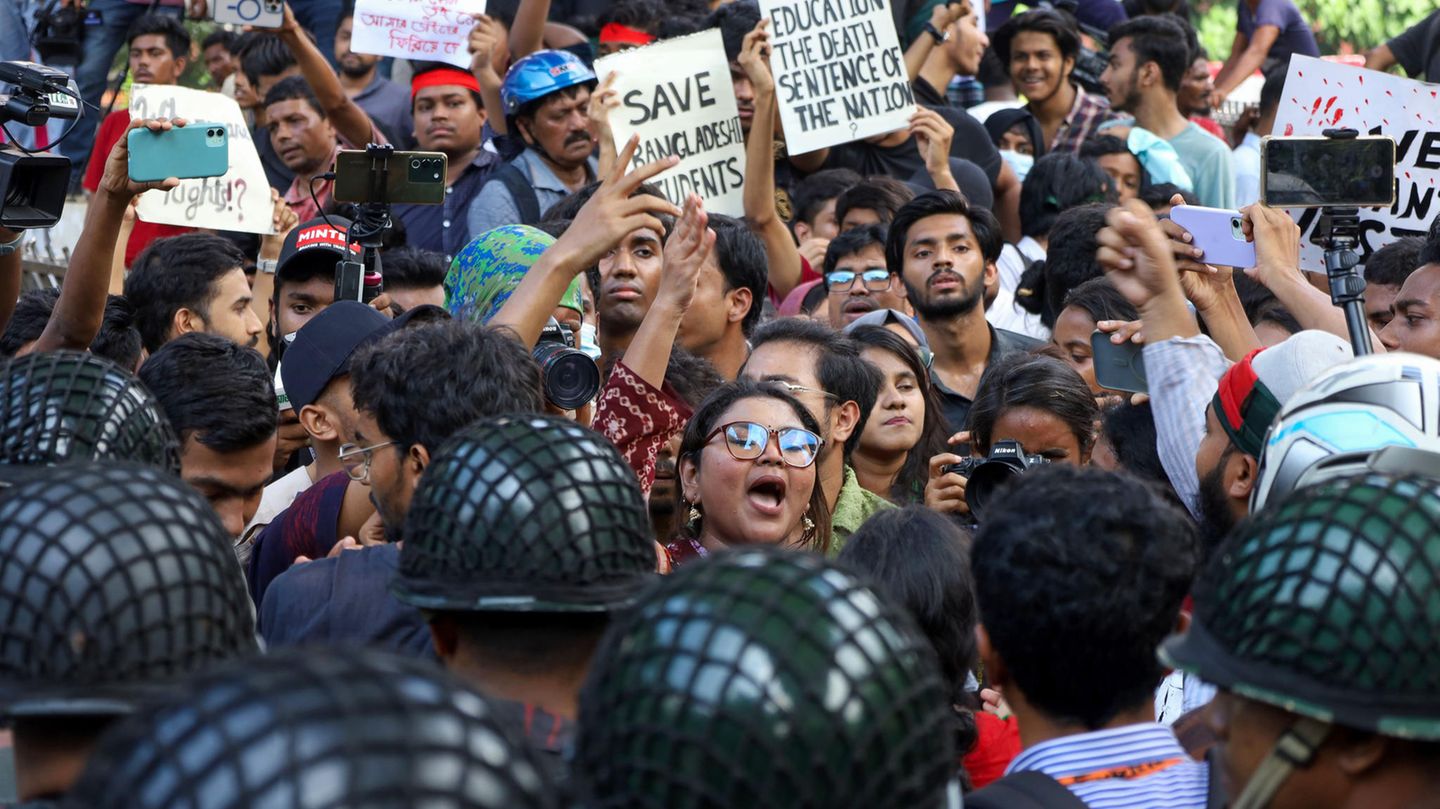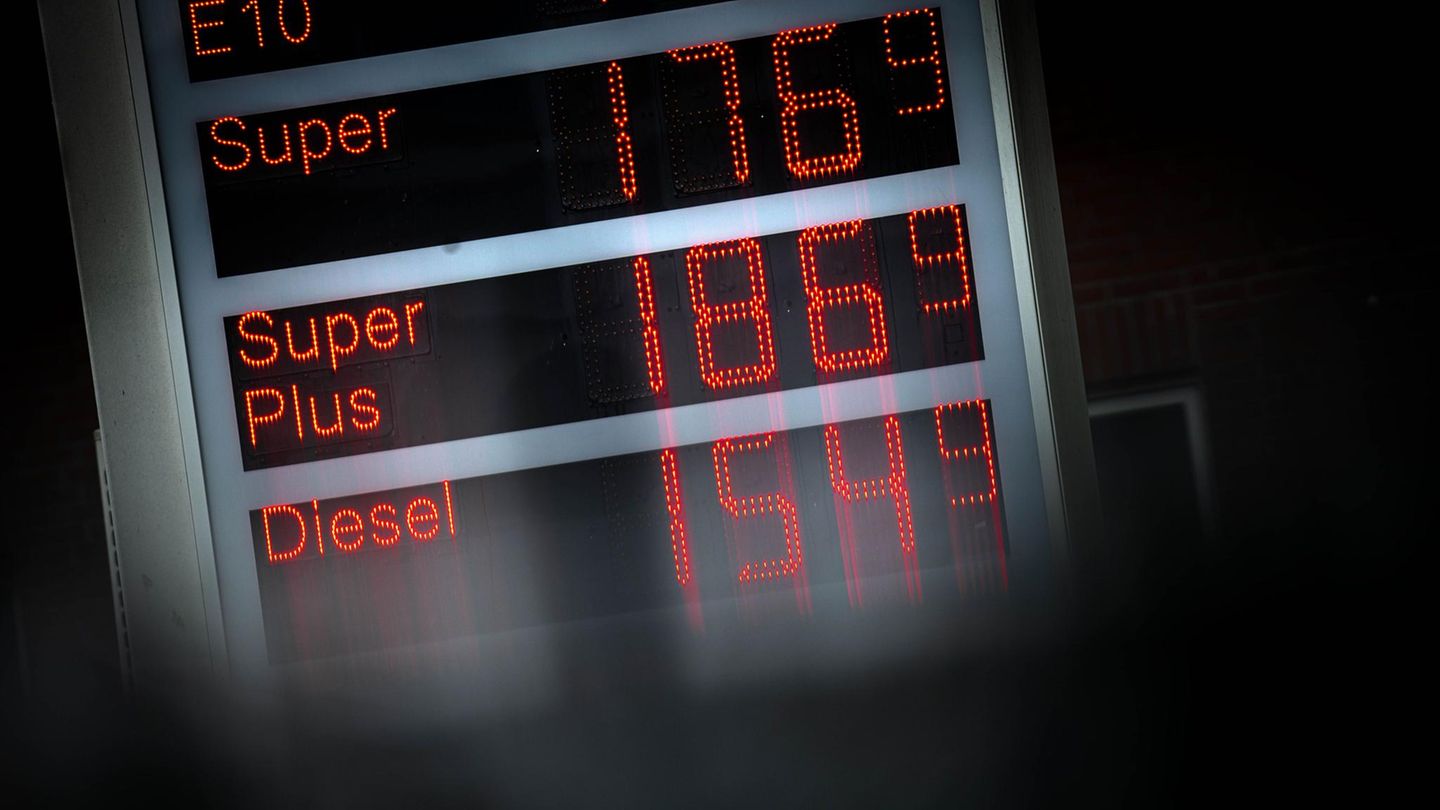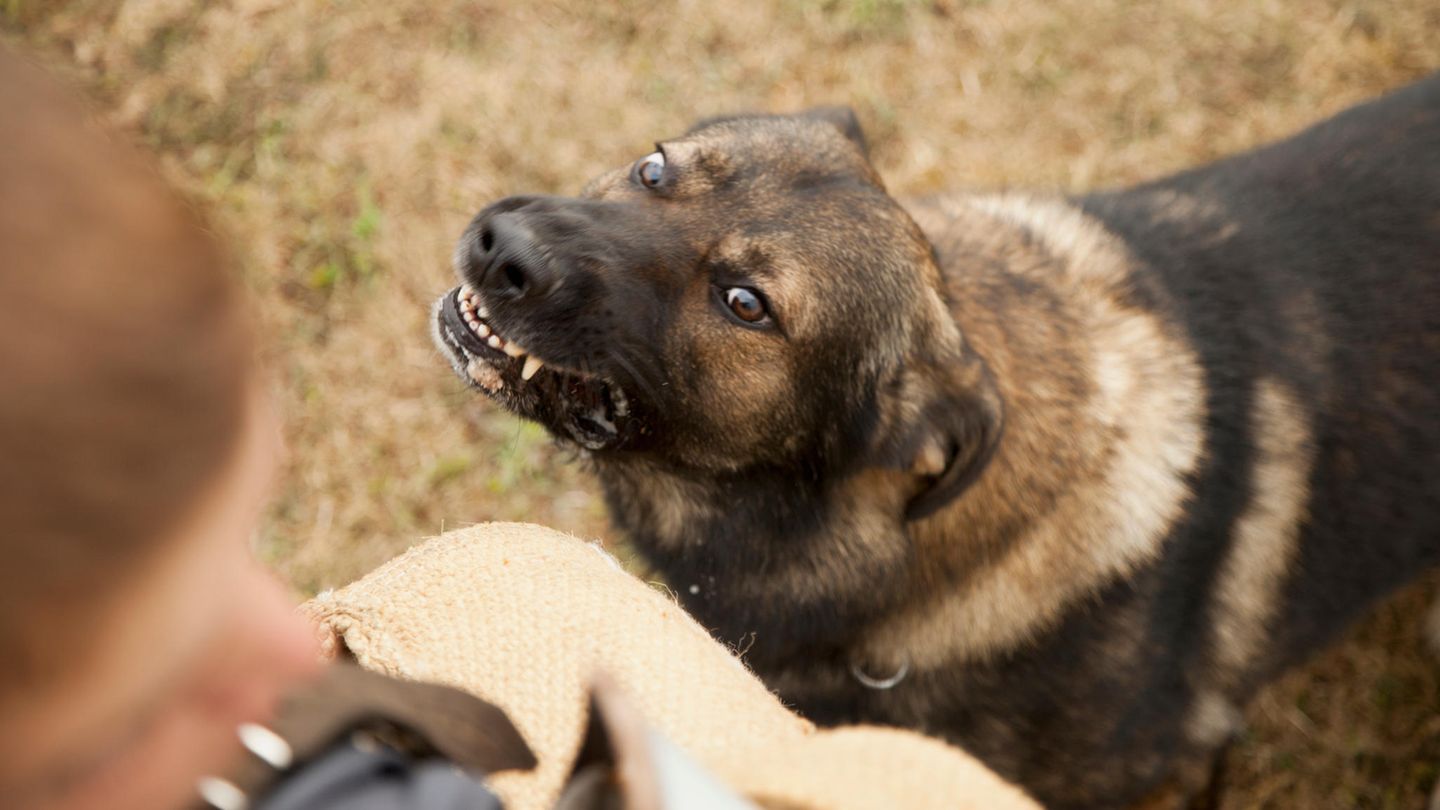The protests in Bangladesh were originally directed against a quota system in the public service. But that is no longer the issue behind the bloody clashes.
A day after violent clashes during protests against Prime Minister Sheikh Hasina in Bangladesh left 94 people dead, the total death toll has risen to at least 300, according to a count by the AFP news agency on Monday based on recent reports from police, hospital doctors and officials. Protests are expected to resume on Monday.
On Sunday, at least 94 people were killed in one day alone – the highest number of victims since the protests began. In the capital Dhaka, numerous soldiers and police patrolled important roads on Monday and barricaded the paths to Prime Minister Hasina’s residence.
Protests are now directed against the government
The demonstrations that began in July to protest against a quota system and which were attended by hundreds of thousands of people on Sunday are now aimed at the resignation of Prime Minister Sheikh Hasina, who has been in office since 2009, and her cabinet.
The 76-year-old head of government was confirmed in office in January in an election boycotted by a large part of the opposition. Her government is accused of, among other things, abusing state institutions to maintain its own power and suppressing government critics – even to the point of extrajudicial killing of opposition members.
People from all walks of life have now joined the protest movement, including film stars, well-known musicians and former generals who have expressed their support. 47 companies in the textile industry, which is important for the country’s economy, have also expressed their solidarity with the demonstrators. It is still unclear whether the army will support the protesters – or whether it will continue to support Hasina.
Bloody clashes in Dhaka
In numerous cities, there were clashes between supporters and opponents of Hasina’s party, the Awami League. The party’s office was also attacked. In the northwest of the country, twelve police officers were beaten to death, said police representative Bijoy Bosak.
At least eleven people were killed and dozens injured in street battles in the capital Dhaka, police and eyewitnesses said on Sunday. Two construction workers were killed on their way to work in riots in the city of Munsiganj on the same day, it was reported. Hundreds were also injured.
“Those who are protesting on the streets now are not students, they are terrorists who want to destabilize our nation,” said Hasina. She appealed to her fellow citizens to react with a firm hand. Demonstrators had blocked important roads. The police tried to disperse the demonstrators using tear gas, stun grenades and rubber bullets. The Internet was shut down across the country.
Government imposes indefinite curfew
These were the worst riots in the South Asian country since Hasina’s victory in elections in January, which were boycotted by the main opposition party.
On Sunday, the government imposed a curfew. It will remain in effect indefinitely. From Monday, all citizens will also be on a three-day holiday.
Last month, at least 150 people were killed in politically motivated acts of violence in Bangladesh. Around 10,000 people were arrested by the police. Students had protested against quota regulations for the allocation of public service jobs. These were then largely overturned by a court, but the students are now demanding justice for the families of those who were killed in the protests. Critics of Hasina had accused the government of using excessive violence in suppressing the protests. The government denies this.
Source: Stern
I have been working in the news industry for over 6 years, first as a reporter and now as an editor. I have covered politics extensively, and my work has appeared in major newspapers and online news outlets around the world. In addition to my writing, I also contribute regularly to 24 Hours World.




